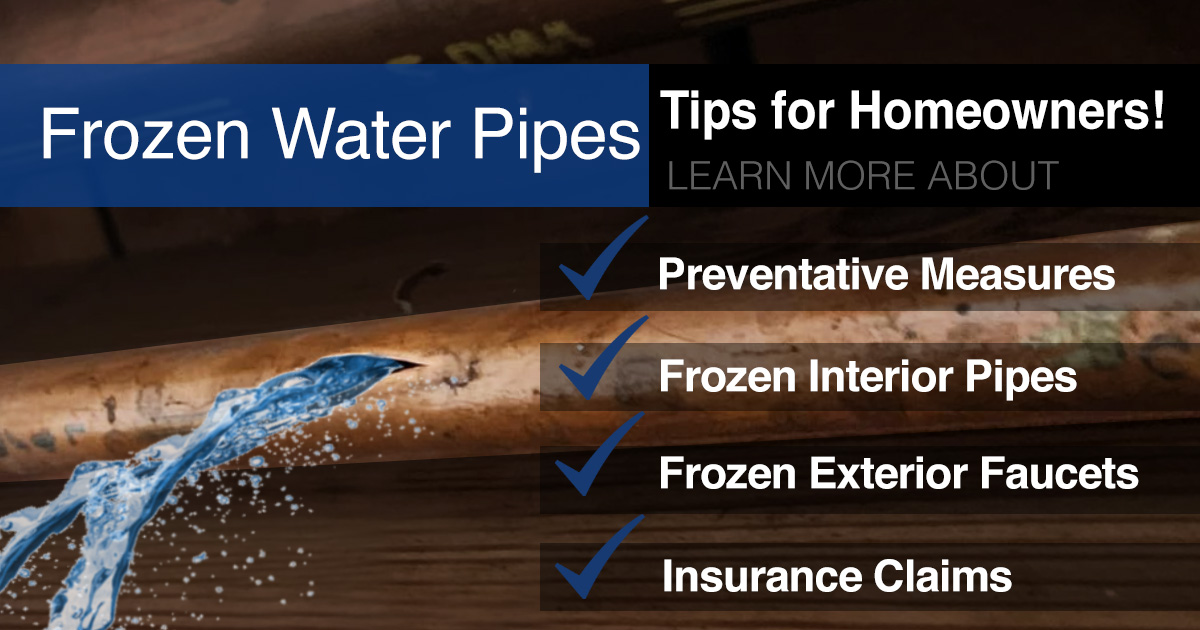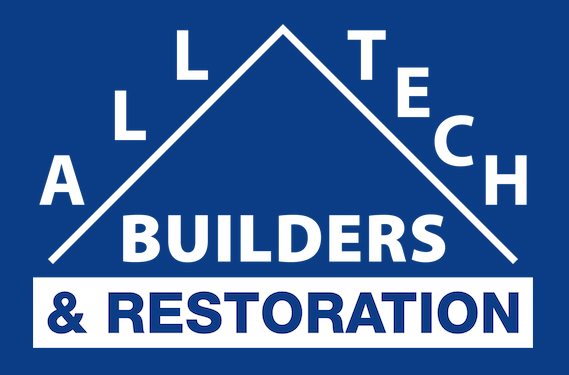How to Prevent Frozen Water Pipes
 Due to harsh winter weather conditions in the Midwest, frozen pipes are common in Chicago’s northern suburbs. This article explains how to avoid frozen pipes.
Due to harsh winter weather conditions in the Midwest, frozen pipes are common in Chicago’s northern suburbs. This article explains how to avoid frozen pipes.
Water pipes can freeze at 32°F (0°C), which is the freezing point of water. However, the temperature at which a specific pipe may freeze depends on several factors such as the material of the pipe, the insulation of the pipe, the amount of water flowing through the pipe, and the surrounding air temperature. When water in pipes freeze, it can cause the pipes to expand and potentially burst, leading to costly water damage.
There are ways to prevent frozen pipes. A good homeowner should make themselves familiar with all your homes systems and mechanical assets. When it comes to your buildings plumbing system, you must become familiar with the location of all your emergency shut-off valve locations, and any locations where you plumbing system connects to exterior plumbing fixtures such as silcocks, spigots and any other connections to external water features that may exist on your property. Next understand the general rule that pipes which are well-insulated, will maintain a steady flow of water that is less likely to freeze compared to a poorly insulated pipe with little or no water flowing through it. Being aware of the locations of these assets will allow you to inspect these areas when temperatures dip below freezing. Now when temperatures dip below freezing, you know where to inspect.
Actions you can take to prevent frozen water pipes in your home.
• Disconnect and drain outdoor hoses. When it gets really cold and temperatures are below zero for extended periods of time, we are all vulnerable.
During these extended cold periods you can loosen your faucets to allow a slow drip at various fixtures in your home. This allows water to flow slowly. Again, moving water does not freeze. If you are a snowbird who flies south for the winter (lucky you) and/or you are leaving your home. for an extended period, ask your village or city to shut off your water at the main water valve (also known as the Buffalo Box or B-Box) and drain the system.
Special Consideration for Exterior Faucets. While we can do our best to manage our homes interior plumbing system. We all have at least one or two exterior plumbing fixtures that are more vulnerable due to their exposure to the exterior weather elements. Exterior faucets are also known as a sillcock (or hose bib). Sillcocks are outdoor faucets that are used to connect a hose to a water supply and are exposed to the elements. Depending on the age of your home, pipes that are connected to exterior plumbing should be insulated. Sillcocks can freeze in cold weather if not properly managed. When water inside the sillcock or hose freezes, it can cause the pipes leading to the sillcock to freeze and potentially burst, leading to water damage. To prevent pipes to exterior fixtures from freezing, it is important to disconnect and drain outdoor hoses and turn off the water supply to the sillcock before winter. If the sillcock is already frozen, it can be thawed using the same methods as described for frozen pipes.
What do I do if my pipes or fixtures have already frozen? If your exterior spigot or silcock is frozen, do not touch or mess with it! Even turning it on can cause the valve or handle to break.
Step 1 If not done already, identify any interior valves which can be closed. This will minimize any additional pressure on the pipe.
Step 2 Contact and (in a perfect world) consult with at least two different local plumbers. Depending on supply and demand you may be lucky to get one plumber out.
If you have interior pipes which are frozen:
Step 1 When an interior pipe is frozen, it is likely because it shares an exterior wall and the pipe is not properly insulated. It is important to take action to thaw this pipe or fixture as soon as possible. First, inspect to see if you can locate any valves that might allow closure of the frozen section. To thaw the pipe, do not use an open flame to thaw pipes, as it can be dangerous and potentially cause a fire. Instead, use a heating pad, hairdryer, or a towel soaked in hot water applied to the frozen area.
Step 2 Contact and (in a perfect world) consult with at least two different local plumbers. Depending on supply and demand you may be lucky to get one plumber out.
What to do if my pipes have frozen and broken resulting to damage of my homes interior? As local IICRC is certified Fire, Flood Restoration and Mold Remediation Company who operates in Chicago’s north suburbs you can trust our answer on this question. If you are suffering from recent broken water pipes and damage to your finished basement or home, it is important to contact a contractor that is IICRC certified. Using an IICRC certified contractor will ensure your maximin reimbursement from on your insurance claim. This is because we know how to communicate with your insurance company. The IICRC is an accredited Standards Developing Organization (SDO) by the American National Standards Institute (ANSI).
We hope you found this article useful and informative. If you need a local IICRC certified contractor serving Deerfield, Buffalo Grove, Northbrook, Glenview, Wheeling or nearby, to assist you with frozen or broken water pipes contact All Tech Builders and Restoration. We have in-house licensed plumbers and remodeling services that are standing by, ready to assist you!

